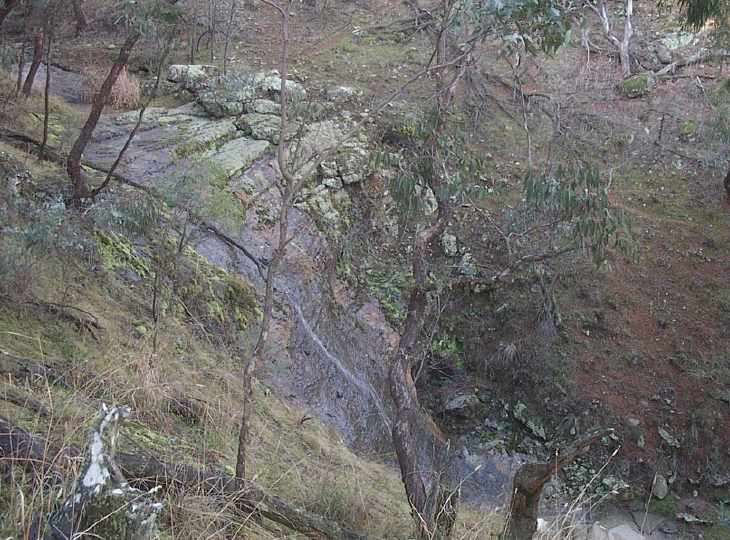Historical Timeline
- 1820s to 1840s
- 1850s
- 1860s
- 1870s to 1890s
- 1900s – 1940s
The Property Investors and Mining Speculators
The first purchases of land in the Cadiangullong Valley were not made for agricultural or pastoral purposes, but as speculation for the underground wealth they might contain. The discovery of copper at Cadia is attributed to the first Geological Surveyor of NSW, Samuel Stutchbury, who recorded his findings near Oaky or Cadiangullong Creek on 18 July 1851 and had them published in the Votes and Proceedings of the Legislative Council for that year. Stutchbury wrote:
“In a gully or creek called the Waterfall, running into the Cadiangullong or Oaky Creek, at the western end of a section of 640 acres, forming Lot 1, for sale on 7th May at Carcoar [Portion 41, Parish of Waldegrave], and at the extremity of a mountain spur known as the Rocky Range, there is an immense mass of oxydulous iron, forming in one solid mass a precipitous waterfall of about 60 feet in height. In this mass of iron, especially in the joints, there is brilliant crystallised iron pyrites, with small quantity of yellow copper ore, and traces of blue and green carbonates of copper. A few yards below the waterfall large masses of yellow ochreous iron ‘gossan’ occur in the banks and bed of the creek. This gossan contains a considerable quantity of earthy green carbonate of copper, also plush-like malachite. Upon sinking a short distance into it on the eastern side, a rich lode of grey sulphuret of copper was found. In traversing the creek southwards numerous indications of other lodes were visible, together with large masses of mundic.” (J. E. Carne. The Copper-Mining Industry and the Distribution of Copper Ores in New South Wales. Mineral Resources No. 6. Second Edition. Sydney. 1908:128.)
When the land was advertised for sale in 1851, traces of copper were mentioned, but little interest was received, while the majority of the population was diverted by the discovery of gold. Nonetheless from the late 1850s a group of investors progressively bought up the land on which copper was located. These men included Saul Samuel, J. S. Rodd, son of Brent C. Rodd, Randolph J. Want and Thomas Icely, but also William Lawson and William Jones. Both William Lawson and Thomas Icely owned large landholdings nearby, so it is quite likely that personal knowledge, as well as the report of Stutchbury, alerted the investors to the copper prospects and enabled them to gain a better understanding of their potential before purchase. The interests of these investors were to strongly influence how Cadia was opened up for copper mining in the 1850s and 1860s.
